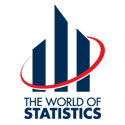Title: Detecting Seasonality in Seasonally Adjusted Time Series
- Speakers: David F. Findley, U.S. Census Bureau
- Authors: David F. Findley and Demetra P. Lytras, U.S. Census Bureau
- Discussant: Agustin Maravall, Bank of Spain
- Chair: Richard Tiller, Bureau of Labor Statistics
- Date and Time: Friday, September 26th
1:00 p.m. - 2:30 p.m. - Location: Bureau of Labor Statistics Conference Center
- To be placed on the seminar attendance list at the Bureau of Labor Statistics, you need to e-mail your name, affiliation, and seminar name to wss_seminar@bls.gov (underscore after 'wss') by noon at least 2 days in advance of the seminar, or call 202-691-7524 and leave a message. Bring a photo ID to the seminar. BLS is located at 2 Massachusetts Avenue, NE. Use the Red Line to Union Station.
- Sponsor: Methodology Section
- POC e-mail: evans.thomas@bls.gov
Abstract:
The most fundamental seasonal adjustment deficiency is detectable seasonality after adjustment. This occurs when the pattern of seasonal movements is changing over time and the seasonal adjustment method, perhaps due to the options chosen or, with SEATS, the ARIMA model chosen, cannot adequately track the changing pattern over the data interval specified for adjustment. Residual seasonality is weaker and more difficult to detect than seasonality in the unadjusted series. Using deliberately too rigidly adjusted 16-year-long historical monthly U.S. Census Bureau Service Sector series, we investigated the detection properties of five diagnostics when applied to the last 8, 10 and 12 year spans of the adjusted series and the irregulars. The five diagnostics are the quasi-?2 QS statistic for detecting positive seasonal autocorrelation and the "Tukey"-spectrum-based quasi-F test for detecting seasonal peaks of Maravall (2012), the GLS-based stable seasonal regression F-statistic of Lytras, Feldpausch and Bell (2007), and the periodogram and autoregressive spectrum diagnostics. The four most successful diagnostics are in current or forthcoming versions of TRAMO-SEATS and X- 13ARIMA-SEATS.






